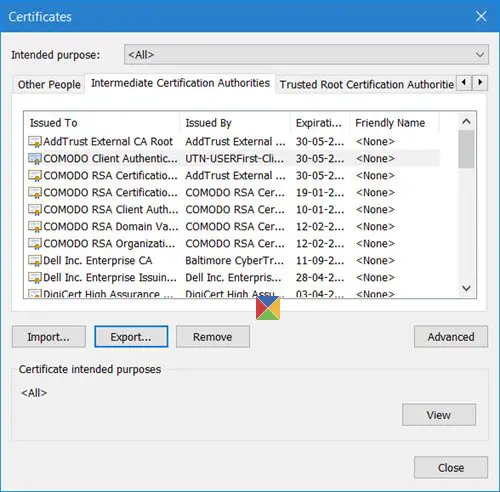Sometimes, when we attempt to place a digital signature into a PDF file using a software designed specifically for the purpose, an error message bearing any one of the following descriptions:
The Windows Cryptographic Service Provider reported an error. Invalid provider type specified, invalid signature, security broken, code 2148073504 or keyset does not exist
The issue usually arises due to outdated certificates or corrupted registry settings. So, you may first want to reset or recreate the user’s profile in the domain to check the result.
What is Windows Cryptographic Service Provider?
Windows Cryptographic Service Provider (CSP) is a software library in Microsoft Windows that implements the CryptoAPI. It provides essential functions like encryption, decryption, and strong user authentication to secure applications, such as secure email and identity verification.
The Windows Cryptographic Service Provider reported an error

According to Microsoft, a cryptographic service provider (CSP) contains implementations of cryptographic standards and algorithms. At a minimum, a CSP consists of a dynamic-link library (DLL) that implements the functions in CryptoSPI (a system program interface). Providers implement cryptographic algorithms, generate keys, provide key storage, and authenticate users.
If you face Cryptographic Service Provider errors, here are a few things you may want to try:
- Restart Cryptographic Service
- Check the Certificate
- Reinstall the Certificate
- SafeNet Authentication Client Tool
- Recreate Microsoft Cryptography’s Local Store folder
- Uninstall ePass2003.
1] Restart Cryptographic Service
Run services.msc and restart the Windows Cryptographic Service.
2] Check the Certificate
Open Internet Explorer > Tools > Internet Options. Select the Content Tab and click on Certificates. Check if there is a certificate for the program or the provider which is giving out errors. If it is missing, you will have to create a new one. If it is expired, remove it and create a new one. If a particular certificate does not work, choose a different certificate, and remove the old certificates.
3] Reinstall the Certificate
Reinstall the entire certificate store and the user’s certificates.
4] Check the SafeNet Authentication Client Tool
If you have the SafeNet Authentication Client Tool application installed on your system, open the app by navigating to its installation directory or by right-clicking the SafeNet icon in the system tray and selecting Tools from the menu.
Click the ‘gear’ shaped icon to access the Advanced View section. Under the Advanced View section, expand Tokens and navigate to the certificate you want to use for signing. You can locate them under User certificates group.
Next, right-click on your certificate and choose Set as CSP from the drop-down menu. Repeat the same step for all certificates that you’re using.
Close SafeNet Authentication Client Tools and try signing the documents again.
5] Recreate Microsoft Cryptography’s Local Store folder
Navigate to the C:\ProgramData\Microsoft\Crypto\RSA folder. Rename the folder labeled S-1-5-18. Restart your system and see if it helps.
6] Uninstall ePass2003
If you have ePass2003 software installed, the cause of the problem could be the ePass2003 e-token. It is advisable to uninstall and reinstall it. To do this, go to the Settings section of the tool, navigate to Apps and Features, and uninstall it just like any other application.
Restart your computer and install ePass2003 again. When reinstalling, make sure that you select Microsoft CSP when choosing the CSP option. Things should revert to normalcy, and the Windows cryptographic service provider error should no longer appear.
All the best!
How do I resolve The Windows Cryptographic Service Provider reported an error?
To resolve the “Windows cryptographic service provider reported an error,” open the Run box, type “services.msc,” and click OK. Find “Cryptographic Services” in the list, right-click it, and select “Restart.” This should help fix the issue.
Related read: Windows Services will not start.
Leave a Reply